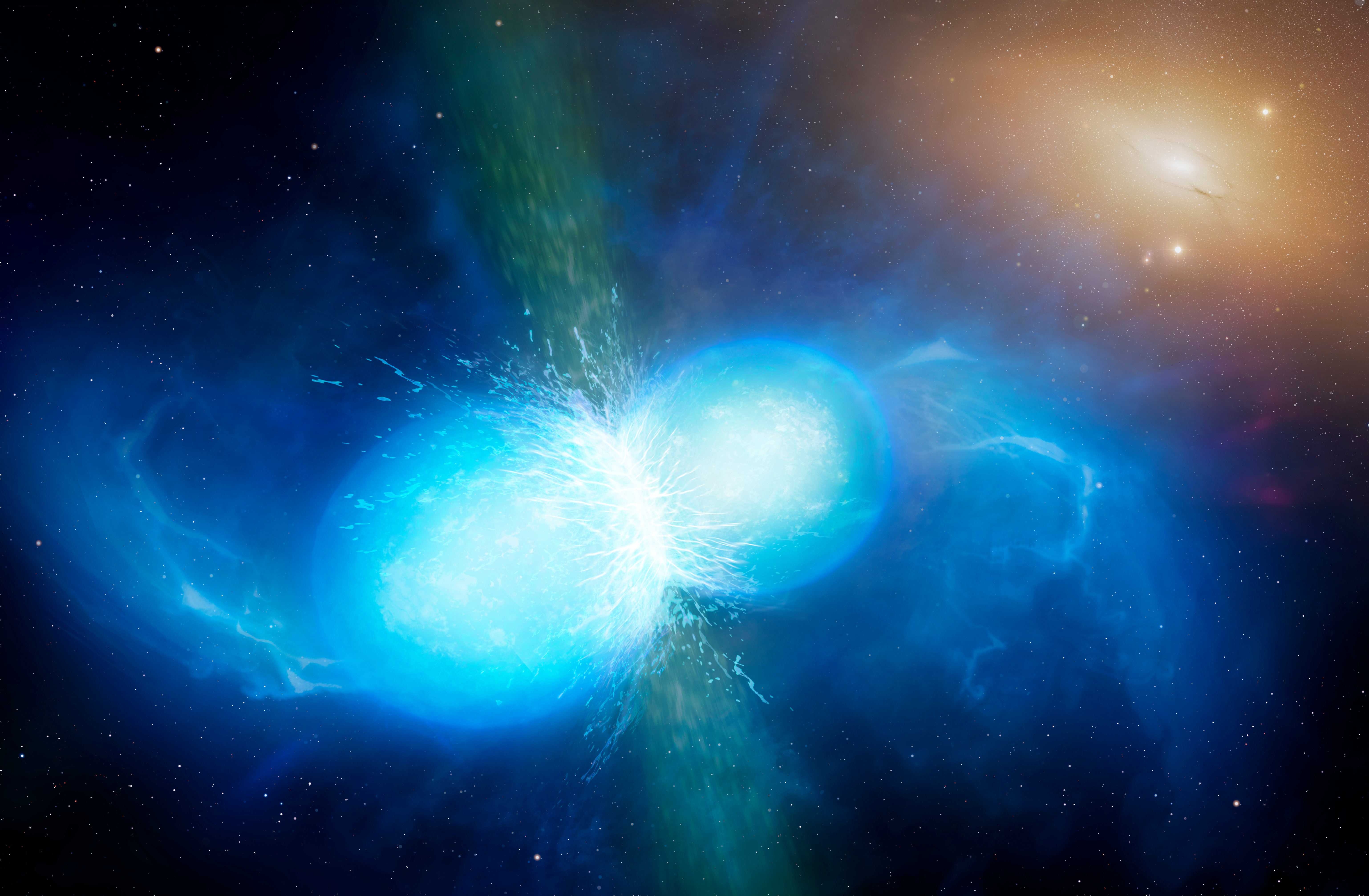Recent findings have shed light on the fascinating relationship between neutron star collisions, gamma-ray bursts (GRBs), and the formation of heavy elements. The universe is an unusual domain filled with mystifying occurrences, and these findings have contributed to our understanding of this connection. Our comprehension of these astronomical occurrences has advanced considerably as a direct result of the ground-breaking data obtained by the James Webb Space Telescope (JWST) and the tireless efforts of devoted astronomers like Andrew Levan. In this piece, we look into the fascinating world of neutron star mergers, gamma-ray bursts (GRBs), and the consequences that these events have for our knowledge of the universe.
Atoms Shaped in the Furnace by the Collisions of Neutron Stars
There’s a possibility that the rings that ornament our fingers conceal a great mystery: atoms that were formed in the violent collisions of neutron stars. In addition to causing long-duration GRBs, these collisions are thought to represent the origins of some of the most massive materials in the universe, such as precious metals like gold, platinum, and uranium. The enormous energy that are produced as a result of these cosmic collisions set in motion a phenomenon that is referred to as the rapid neutron capture process (r-process). This phenomenon is what is responsible for the formation of such heavy elements.
The Groundbreaking Detection Made by the JWST
The James Webb Space Telescope accomplished a spectacular feat when it collected emissions from a galactic radio burst. This provided a one-of-a-kind look into the aftermath of a neutron star collision. Because of the capabilities of the telescope, astronomers were able to see the formation of the lanthanides, which are a collection of 15 metals that are heavier than lead. This discovery provides further evidence that neutron star mergers are directly responsible for the synthesis of heavy elements.
Triangulating the Kilonova Source
Using the Kilonova as a Triangulator An event known as a kilonova was found to be the source of a Gamma-Ray Burst (GRB) that was successfully identified by a group of astronomers led by Andrew Levan and referred to as GRB 230307A. These scientists were able to determine the source of the GRB by the use of rigorous triangulation techniques. The GRB, which lasted for an incredible 34 seconds, demonstrated r-process generation, which calls into question our current understanding of the lifetime of the core engine’s “jet.” This discovery raises some fascinating issues regarding the processes that take place during these enormous cosmic collisions.
Unveiling Potential Galactic Sources
During the course of their research, the group that was lead by Levan discovered a number of bright galaxies in close proximity to the kilonova source of GRB 230307A. These galaxies have the potential to be sources of the GRB. Because it’s possible that these bright galaxies are where the GRB was first created, future research of them could provide some very intriguing results. When it comes to the astrophysical processes that give rise to these occurrences, having a comprehensive understanding of the precise origins of these bursts can provide vital insights.
Missed Gravitational Waves and Future Prospects
While the discovery of GRB 230307A brought forth ground-breaking findings, it also brought to light the significance of using methods of observation that are thorough. The observation of gravitational waves would have provided additional evidence that the kilonova event had in fact occurred. However, the Laser Interferometer Gravitational-Wave Observatory (LIGO) was not functioning properly at the time of the burst. This serves as a reminder of the significance of having numerous observation instruments that complement one another in order to have a complete understanding of the complexities of the universe.
The investigation of collisions between neutron stars and its connection to fast radio bursts (GRBs) and the synthesis of heavy elements is a fascinating topic of study that continues to push the limits of human comprehension. The groundbreaking observations made by the James Webb Space Telescope, in conjunction with the efforts of devoted astronomers like Andrew Levan, have provided essential insights into the aforementioned cosmological occurrences. Discoveries such as these bring us closer to understanding the wondrous processes that shape our universe as we continue our quest to decipher the mysteries of the cosmos and uncover its hidden depths.
![]()
